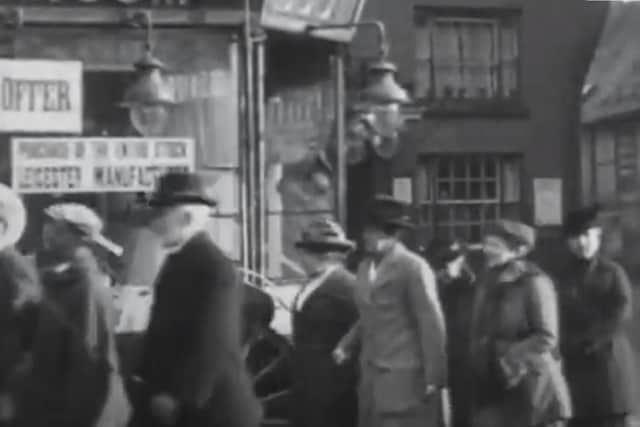Fascinating 100-year-old video footage shows Aylesbury welcome first ever female jurors for murder trial that gripped the country
and live on Freeview channel 276
Fascinating video footage from 100 years ago in 1921 shows the first three women to serve as jurors in a murder trial in Aylesbury which gripped the country. In the footage on the British Pathe YouTube channel - which you can see below - the women are captured attending Divine service and take exercise under escort in a very different looking Aylesbury.
It was for the trial of George Arthur Bailey who was charged with poisoning his wife.
Advertisement
Hide AdAdvertisement
Hide AdThe video shows male jurors walking up the street with the ladies walking at the back.
As the camera pans across the men and ladies dressed in the smart attire of the era, they smile and chat. In the video of the three ladies, one is pointing something out in a paper - possibly even The Bucks Herald!
They then climb onto a carriage with the men and it drives off.
According to historic crime website, CrimeScribe, an accompanying charge against Bailey of attempted rape was dropped.
Advertisement
Hide AdAdvertisement
Hide AdCrimeScribe says the three female jurors in the Aylesbury case was still a novelty after being first introduced the year before.


"The crime wasn’t an unusual one in itself," CrimeScribe reports.
"A disillusioned husband poisoning his wife to give him easier access to younger women isn’t, unfortunately, rare. It’s squalid, cruel and often brutal, but not unusual. Bailey’s case stands out not for the crime, but for the trial and the social and legal landmark it came to be.
"Bailey was a milkman by trade, known locally as the ‘Musical Milkman.’ A keen musician and amateur composer, Bailey had even developed his own system of musical composition. He was also a man with serious psychological defects, psychiatric issues and a lengthy criminal record. Seemingly a career crook if not a competent one, Bailey was known variously as George Bailey, George Arthur Cox, Ronald Gilbert Treherne and Ronald Gilbert Tremayne depending on where and when people met him.
Advertisement
Hide AdAdvertisement
Hide Ad"His personal history made it all too easy for a jury (male, female or mixed) to believe him capable of murder. He’d already been convicted of theft, forgery, fraud, embezzlement, giving false information deserting the army during the First World War and attempted suicide (then illegal). He was a man of disturbed mind, bad character and what we’d nowadays call a sexual predator.
"The most disturbing thing about Bailey aside from his unseemly interest in young, possibly naïve women, was his fondness for poisons. Poisons had been a recurring theme during his adult life. He’d attempted suicide using aconite and morphia on different occasions and been arrested in possession of prussic acid, the same poison that later killed his wife."
At his trial Bailey reportedly claimed his wife had committed suicide (albeit using prussic acid that he had purchased).
"Not surprisingly given the severity of the crime and a capital case involving women, the case drew considerable attention from the press and public," CrimeScribe reports.
Advertisement
Hide AdAdvertisement
Hide Ad"Bailey and his case are scarcely remembered today, but are legal landmarks nonetheless."
The trial began at Aylesbury on 13 January 1920 with Justice Sir Henry McCardie presiding. And he was duly convicted. Maud Stevenson, Annie White and Matilda Tack performed their duties along with the other jurors.
Bailey was sentenced to death by hanging in the gallows room at Oxford Prison - the nearest ‘place of lawful execution’. And he was executed on March 2nd 1921.